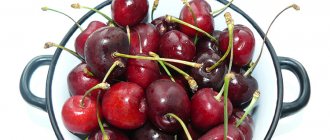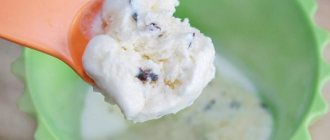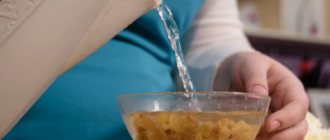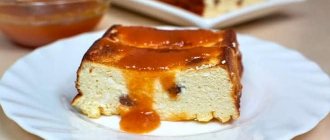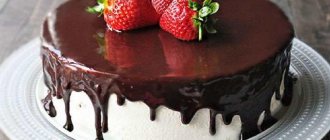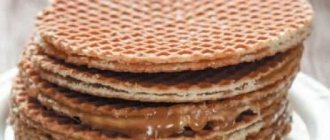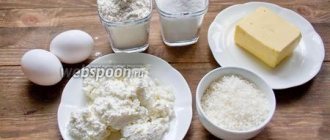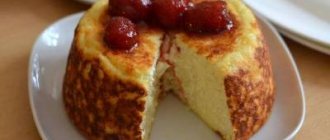Characteristics
Carbohydrates;
Fruit sugars: fructose, glucose, sucrose;
https://www.youtube.com/watch?v=zPQr4JGV6FQ
Alimentary fiber;
Traces of calcium, magnesium, potassium, iron, zinc salts;
Vitamins: B1, B2, B3, B5, B6;
Essential oil;
Alcohols: pentanol, undecanol;
Phenolic compounds, such as cresol;
Organic acids: salicylic, benzoic, anise, acetic, .
Aromatics: nonanal, guaiacol, dodecanal, pentanal, hexonal, heptanal;
In total, more than 169 different aromatic compounds have been found in vanilla. Therefore, it is impossible to compare it with artificial vanillin.
Many of these compounds have antioxidant properties and are components of many drugs.
- tannins
- Sahara
- essential oil
- cinnamon ether
- resin
- essential oil
- minerals (manganese, zinc, potassium, iron, calcium)
- B vitamins
Such a rich composition, naturally, cannot be replicated in an industrial environment, so the synthetic powder does not have all the beneficial qualities that a natural product has.
- white or colorless powder;
- sweet aroma;
- bitter taste.
Nutritional value and calorie content per 100 grams of product
The composition of natural vanillin includes:
- essential oil;
- gluco-vanillin;
- tannin;
- cinnamon ester.
There is a difference between vanilla and vanillin. Vanilla is a plant that produces fruits in the form of pods. Vanillin, on the other hand, is an aromatic substance that makes up only 2% of the mass of dried plant seeds and is a product of petrochemical processing. The smallest amount of the substance is found in olive oil, raspberries, and lychees. Essential oil gives vanillin its characteristic smell.
According to the chemical classification, vanillin belongs to the group of aldehydes. Its structural formula is C8H8O3. The crystals look like small, colorless needles with a strong vanilla scent. Crystalline vanillin has a strong aroma and bitter taste.
Vanilla powder is also isolated - the crystals are crushed to a fine powder, which has a more noticeable smell. There is also a liquid version of the seasoning - an alcohol extract. It is used to prepare drinks and in perfumery.
Physical properties of the product:
- density slightly more than 1 gram per cubic centimeter;
- melts at a temperature of 80 degrees;
- dissolves well in water.
The calorie content of the spice is 288 kcal per 100 grams. Energy value includes:
- proteins - 0.06 g;
- fats - 0.06 g;
- carbohydrates - 12.6 g.
The nutritional value of the product, in addition to BJU, consists of B vitamins.
Vanilla is an evergreen perennial vine that belongs to the orchid genus.
Vanilla pods are formed after the plant blooms; they are collected immature and subjected to specific processing, after which they acquire the familiar aroma, color and taste.
The vanilla is then dried in the fresh air for several months. The spice is ready if a white coating appears on the pods.
- vanillin (aromatic substance);
- essential oil;
- balm;
- resins;
- Sahara;
- fat.
100 g of vanillin contains 12.65 g of carbohydrates, 0.06 g of proteins and 0.06 g of fat; vitamins: B2 (riboflavin), B3 or PP (niacin), B5 (pantothenic acid), B6 (pyridoxine).
The calorie content of vanillin is 288 kcal per 100 g of product.
Description
Vanillin is a crystalline powder in the form of white crystals without color, with a pronounced aroma and taste of vanilla. Vanillin is found in the plant vanilla, as well as in many other plants, in particular cane sugar. There is a small amount of vanillin in potato peels, Peruvian balsam, raw alcohol, dew incense, etc.
Currently, some forms of vanillin are among the most expensive spices in the world. This is due to many factors, not least of which is the difficulty of growing vanilla. This plant requires artificial pollination, and only half of the flowers bear fruit. In addition, the process of producing vanillin is quite labor-intensive and complex.
Vanillin is found in small quantities (1-3%) in vanilla in the form of a glycoside, so its production is quite expensive. At the moment, a synthetic vanilla substitute is mainly produced, but, like any substitute, it is not able to completely reproduce the entire range of the subtle aroma of natural vanilla.
The birthplace of natural vanillin is Mexico, where the orchid vine with the fruits of Vanilla planifola grows, from which vanillin is actually obtained. Currently, this plant grows in tropical forests around the world. The main producer of natural vanillin is Madagascar. Vanilla fruits are collected while still unripe, when they do not have the characteristic smell of vanilla, and they contain vanillin in the form of a glycoside. After picking, the fruits are kept for several months until the smell of vanilla appears.
The global demand for vanillin is so high that manufacturers are unable to produce the required amount from vanilla beans. According to statistics, in 2001 the demand for vanilla was 12 thousand tons, while only 1.8 thousand tons were produced naturally. Thus, we had to learn how to synthesize vanillin artificially. Artificial vanillin first appeared in the 19th century.
Currently, it is widely used in many industries: perfumery, cooking, pharmaceutical production, liquor industry, etc.
The composition of vanilla and the features of obtaining the spice
Previously, vanillin was obtained from real vanilla pods, in which it is contained in the form of a glycoside. They were collected and the seeds were taken out. The seeds were then blanched in hot water. For the next two months, they were left in the sun during the day and packed into an airtight container at night. After which the seeds were dried for several more months.
This process is labor-intensive and expensive and requires large quantities of plants. Therefore, a method was found to synthetically produce the seasoning.
It is obtained from guaiacol or lignin - components of wood. The production was patented in 1894, and since 1930 synthetic vanillin began to be produced everywhere. Since 2000, the production of biosynthetic seasoning began - from ferulic acid under the influence of microorganisms. The cost of the product is $700 per kilogram.
Vanilla benefits for the body
Vanilla aroma is very popular and widely used in the production of various food and beverage products. In the modern food industry, vanillin is mainly used to flavor products, as well as to mask or soften the undesirable taste of a product.
It is important to use vanillin in the correct proportions, which depend on the consistency of the dish, time and method of preparation. It should be remembered that in excessive quantities it imparts bitterness to the dish.
Vanillin has quite a high calorie content, and the products to which it is usually added cannot be called dietary. This powder is often added to biscuits, cookies, chocolate, mousses and puddings, jellies, cottage cheese casseroles, and baked goods. In addition, it is often used to improve the taste of tea, cocktails and other alcoholic or non-alcoholic drinks.
Most people appreciate vanilla only for its pleasant aroma and sweet taste that it adds to baked goods and other sweet dishes. But it can also bring special health benefits.
Reducing blood cholesterol levels, which is important for people at high risk of heart attacks and strokes;
Relieving pain from arthritis, gout and other inflammatory processes;
Reducing the risk of atherosclerosis;
Reducing inflammation;
Increasing the body's defenses;
Cancer prevention;
Reducing nervous disorders;
Improving metabolism, which helps maintain weight;
Improving the functioning of the digestive tract;
Prevention of digestive disorders: vomiting, nausea, flatulence, cramps, diarrhea;
Improving the condition of skin and hair.
Vanilla, due to its properties, is often included in hygiene and cosmetic products for skin and hair care. Vanilla essential oil is most often used for this purpose. Its use can help strengthen hair follicles and improve blood flow to the scalp, which in turn stimulates hair growth.
The antibacterial properties of the spice are effective in fighting acne as it can eliminate the infection and speed up the healing process. Its use prevents the appearance of scars and dark spots from acne.
It is known that regular consumption of vanilla has a positive effect on stabilizing hormonal levels and also helps relieve PMS symptoms. If the spice is natural, it will even help stabilize the menstrual cycle.
The digestive system reacts to the constant use of this seasoning by decreasing the acidity of gastric juice. Vanilla helps the body quickly break down and remove carbohydrates, which can be effectively used for weight loss.
Vanilla also has aphrodisiac properties. To achieve this effect, you need to take a warm bath with vanilla oil for 15 minutes. The oil is produced from the oily substance found inside the plant's pod and also survives from the seeds. At home, you can prepare vanilla macerate - that is, oil enriched with the beneficial substances of vanilla.
As a rule, in cooking of different scales - both in the kitchens of individual housewives and in the production of food on an industrial scale, vanillin helps to add flavor. It is also used to make the palette of flavors softer, as well as to hide the extraneous and not the most pleasant qualities of various components.
When using vanillin, you need to very carefully monitor the proportions and take into account the factors of preparing a particular dish. Among the latter: cooking time, consistency level. If there is a lot of vanillin in the composition, then most likely the finished product will taste bitter.
Vanillin has a significant number of calories. Therefore, all culinary delights prepared with it cannot in any way be classified as dietary. This substance is today an integral ingredient in chocolate, cookies, puddings, mousses, jellies, curd dishes, buns and pies. Vanillin is excellently used as a taste enhancer for drinks: carbonated waters and even tea.
– Vanillin in the form of crystals has the classic aroma of its natural relative. The main advantage of this embodiment is that it can withstand high temperatures reaching two hundred to two hundred and fifty degrees Celsius. Crystalline vanillin has gained great love in the production of bakery and confectionery products and among enterprises involved in the production of ice cream.
– Vanillin in powder form. In addition to the main substance, it contains derivatives of lactose, dextrose, maltodextrins and other components. This vanillin is used in the manufacturing process of chocolate products. Its aroma appears at normal temperature levels, and it also dissolves much faster in water;
– Vanillin in liquid form is its crystalline embodiment, which is dissolved in ethanol, or propylene glycol or triacetin. In this case, the determining factors are the temperature of the dissolving solution and the degree of its concentration. Thus, propylene glycol acts at one hundred and eighty degrees Celsius. Vanillin, which appeared with his participation, is used in the production of milk products, various drinks and baked goods.
How is vanilla useful, what pathological processes can be eliminated with its help?
Due to the inclusion of various biologically active substances in the plant, vanilla effectively affects the functioning of all systems of the human body. In medicine, the following beneficial properties are used in the treatment of various diseases:
- eliminates feverish conditions;
- helps get rid of pain and other discomfort in the stomach;
- fights nervous system disorders and mental illnesses;
- relieves drowsiness and sleep problems;
- helps relieve rheumatism;
- stimulates the work of muscle tissue;
- improves metabolism;
- fights gastrointestinal problems;
- suppresses the tendency to drink alcoholic beverages;
- helps restore the menstrual cycle and relieve symptoms of premenstrual syndrome;
- helps with antibacterial therapy;
- used in the fight against cancer;
- eliminates anemia.
Application
The range of uses of vanillin is very wide. This spice is used in the food industry, pharmacology, and in the production of perfumes. It is used both to give products a pleasant aroma and to mask odors and tastes.
In the production of medicines, especially for children, vanillin is often added to give the medicine a pleasant taste.
When preparing culinary products, any housewife includes vanillin in the recipe. This component is used to add an exotic taste to cocktails, alcoholic drinks, teas and other products.
Market Analytics
- COVID-19 is changing the rules of the game in the cosmetics market
- Beauty of the future: cosmetic innovations 2020
- New ingredients are the driving force of the cosmetics industry
Convenient search for beauty salons on our website
Beauty salons in Moscow Beauty salons in St. Petersburg Beauty salons in Ekaterinburg Beauty salons in Novosibirsk
Latest blog posts on our website
- Naturecream / Geranium (Pelargonium) oil for skin health and beauty
- Prostye-sovety / Save on a beauty salon: procedures that can be done at home
- Naturecream / Growth Factor - brings back youth?
- Oksana-Lezina / 3 effective abdominal exercises from a fitness instructor for beginners
- Prostye-sovety / Making perfect curls at home
- Prostye-sovety / Which hair removal method to choose
- Naturecream / Wrinkles Puppets
- Naturecream / PEPHA-TIGHT - instant skin lifting
- Naturecream / Blue light - a danger to the skin
- Naturecream / Cocoa Butter – A treat for the skin
Latest forum topics on our website
- Mrs._Smith / Badly sunburned! What to do?((
- Ice / Is it necessary to combine fitness classes with a diet?
- Antonova / What can be used for hair loss?
- Radio operatorKat / Who was on a protein diet?
- Suzanna / Mesotherapy on the face
Other articles in this section
| Raw sugar Raw sugar is a unique, incompletely processed, easily digestible food product. It tastes sweet, most often of cane origin, less often made from sugar beets, as it has an unpleasant aftertaste and lower content of microelements. Available in light brown, gray and white colors. |
| Apple cider vinegar 3% Apple cider vinegar is vinegar obtained by fermenting raw materials from apples. Moreover, it has a richer taste than alcohol. Apple cider vinegar is mild in taste and aromatic. |
| Cloves Cloves are a spice that consists of the dried, unopened buds of the clove tree. This plant grows only in warm countries with a humid, maritime climate. The cultivation of clove trees is widespread in Indonesia, Malaysia, Tanzania, Grenada and Madagascar. |
| Rosemary Rosemary is a perennial evergreen shrub. Belongs to the Yasnotkov family. Quite common in Europe and the Mediterranean. Translated from Latin, its name sounds like “sea dew.” The needle-like shape of the leaves and lemon-pine scent make rosemary resemble coniferous plants. |
| Adjika Adjika is a spicy Caucasian seasoning in the form of a paste containing garlic, salt, red pepper and various herbs. It is often red in color, but can be green when using unripe peppers. According to one version, the word “adzhika” is translated from Abkhazian as “red salt”, according to another – as “bread with salt”. |
| Saffron The spice that can be called the most expensive in the world is saffron. For its production, exclusively the stigmas of crocus flowers are used, which are crushed for this purpose. |
| Mayonnaise Provence Mayonnaise was first prepared in France, in a city called Mayon - hence the name of modern mayonnaise. The date of production of the first mayonnaise according to the classic recipe dates back to the 18th century. The ancestor of mayonnaise was a sauce that was prepared in Spain from eggs, olive oil and garlic. |
| Dried basil Basil is a spicy aromatic seasoning, known since ancient times and coming to us from eastern countries. In India, basil was revered as a sacred plant and was called the favorite plant of Vishnu. Hindus believed that basil bestowed divine power, and the inhabitants of Ancient Rome believed in its ability to bring wealth and prosperity to the home. Basil was brought to Europe in the middle of the 4th century and quickly spread throughout the Mediterranean. |
| Cane Sugar Sugarcane is a cereal plant that is similar in appearance to bamboo. Its juice is used to make sugar. Sugar cane originated in India, later began to be cultivated in the Middle East, after which the Arabs brought it to the Mediterranean countries. Sugar appeared in Russia under Peter I, when it was very expensive and candies made from it were available only at the royal court. At the same time, sugar was also sold as a medicine. The development of its industrial production began with the growing popularity of tea. |
| Salt Salt (sodium chloride (NaCl), sometimes table salt, table salt, rock salt) is a white mineral, highly soluble in water. Salt is quite often found in nature in the form of crystals of different textures and sizes (large and small). It is one of the minerals that people eat. The human body has a need for salt, but its large consumption causes quite a lot of diseases and complications in the body. |
Vanilla beneficial properties
Natural vanilla seed extract has many beneficial properties:
- improves mood;
- helps to calm down and relax;
- reduces the risk of cancer;
- stimulates metabolism;
- has antiseptic and anti-inflammatory effects.
Thanks to this, the product has found application not only in cooking. The properties of the plant are valued by perfumers, pharmacists, and herbalists.
The benefit of vanillin lies in its aroma, sweet and soft. This aroma has a relaxing and calming effect on a person, relieves irritation, tames anger, removes anxiety, restlessness and insomnia. In addition, the properties of vanillin include helping in the treatment of certain diseases, especially diseases of the nervous system.
It is important to know that vanilla, a key component of vanillin, is a powerful anticarcinogen, antioxidant and antidepressant. For this reason, a beneficial property of vanillin is its ability to reduce blood pressure. It also helps with allergies, fevers, seizures, arthritis, hysteria and inflammatory processes.
The spice is actively used in cosmetology in the production of creams, hair and body products, and decorative cosmetics. Perfumers often use vanilla in the manufacture of eau de toilette and perfume.
Benefits of vanilla extract and essential oil for skin:
- elimination of pigmentation and lightening;
- reduction of irritation and inflammation;
- moisturizing and softening;
- tonic effect, imparting elasticity;
- protection from negative environmental factors.
The spice is often present in shampoos, conditioners, masks and other hair products.
Vanilla oil is also used for massage. It nourishes the skin, relieves muscle tension, eliminates inflammation. The substance is added to mixtures for relaxing baths and cellulite scrubs.
This spicy ingredient has been and will remain one of the most trusted natural healing agents and is also one of the most popular flavors for our palates. Due to its chemical composition, this spice has many beneficial properties.
Vanilla is a natural tranquilizer. Its aroma has calming properties.
In aromatherapy, vanilla is valued for its relaxing properties, as a natural antidepressant, and is used as an aromatic stimulant.
All these properties are provided by volatile compounds: evengol, limonene, coumarins, benzaldehyde. The sweet aroma of vanilla and its derivatives promotes relaxation.
Anxiety;
Depression;
Insomnia.
The spice is used in weight loss diets.
Vanilla contains coumarin, evengol, phenolic compounds, salicylic acid. All these components have an analgesic effect. Therefore, it can be considered a natural analgesic.
Muscle pain;
Headache;
Stomach pain;
To improve digestion.
In addition, it contains components such as catechins, which can be used in the treatment of herpes.
Vanilla is traditionally used to help reduce fever naturally. It contains salicylates, salicylic acid, benzoic acid and eugenol, which have an antipyretic effect.
Adding vanilla to food or using it in aromatherapy can be an effective treatment for rheumatic diseases and fibromyalgia.
Vanilla has an enhancing effect and stimulates digestive functions. It has laxative and choleretic properties, stimulates the production of bile.
Due to the presence of substances with antibacterial and antiseptic properties, it can be used for bad breath or halitosis. Among such substances it is necessary to highlight eugenol, tannins, vinyl acid and other organic compounds.
The volatile substances in this plant, in this case vanilla aromas, have antioxidant properties that are beneficial to the body and prevent premature aging. These substances include phenolic compounds, tannins, vanillic acid and others.
These compounds stimulate natural skin cell repair, suppress free radicals, protect the immune system and reduce inflammation.
Stimulating;
Calming;
Relaxing;
Antifever;
Antirheumatic;
Antibacterial;
Antioxidant;
Painkillers.
The popularity of the aromatic additive is due to its sweetness. Therefore, the beneficial effects of vanillin are often associated with the effect of vanilla odor on the body. It has a good calming effect and effectively reduces irritability and anxiety.
Using any cosmetic product with the addition of a small amount of vanilla can help relieve tension, relax, and achieve sound, restful sleep. When applied to skin or hair, the vanilla scent will stay with you all day.
I would like to add about the positive effects on humans when using natural vanillin:
- contains antioxidants that prevent aging and maintain a beautiful appearance;
- stimulates brain activity, improves concentration and memory, has a beneficial effect on creativity;
- has a powerful anti-carcinogenic effect, prevents the formation of malignant tumors;
- enhances the therapeutic effect on the body for arthrosis and arthritis;
- strengthens the immune system, helps a person quickly recover from infectious and inflammatory diseases.
The Journal of Botanical Economics (2008) mentions that medieval healers used the aromatic pods to treat various ailments. Modern researchers have confirmed only some of the beneficial properties of vanilla associated with the antioxidant nature of its constituent substances.
The smell of vanilla calms the nervous system, so it can be used as an additional treatment for anxiety and depression. The journal “Chemistry of Senses” (2005) presents the results of an interesting experiment. Its participants inhaled the smell of vanilla for some time, after which they felt relaxed and happy. And doctors at one New York hospital are already using a plant extract to relieve symptoms of claustrophobia.
Aphrodisiac
Back in 1762, German doctors informed the world community about some of the piquant properties of vanilla. She helped some patients suffering from impotence and restored desire and virility. Today, natural vanilla essential oil is a popular aphrodisiac.
In the practice of aromatherapy, another beneficial property of the vanilla scent is actively used, namely its ability to reduce cravings for sweets, especially chocolate. Nutritionists from London, using the example of overweight patients, have proven the effectiveness of wearing pendants that exude the sweet aroma of vanilla essential oil.
The polyphenol vanillin has shown promising results in the fight against cancer at the experimental stage. On the pages of the magazine "In Vivo" a heated discussion unfolded about the harmful effects of polyphenol on resistant cervical cancer cells. It turned out that treating an abnormal cell culture with vanillin induces its death.
The European Journal of Pharmaceuticals (2005) reviews another animal study on the anticancer properties of vanillin. For a long time, mice with breast cancer received an aqueous solution of this polyphenol, which significantly reduced the number of cancer cells in the body of sick animals.
In tests on mice, Dr. Toshio Asakura of the Children's Hospital of Philadelphia obtained positive results for vanillin against sickle cell disease. This compound, synthesized from a natural product, prevents the formation of sickle-shaped altered blood cells that clog the bloodstream, causing a lack of oxygen in the tissues and serious complications.
The above-mentioned studies show promise for the beneficial properties of vanilla and its main compound (vanillin) in the treatment of certain diseases. But so far the success of this seasoning is limited to the walls of scientific laboratories. It has not yet come to the point of human participation in such experiments. Therefore, be sure to talk to your doctor before taking vanilla extract as a remedy.
Vanillin is a spice with a pleasant, sweet smell that is extracted from the vanilla fruit. It is a colorless powder consisting of small crystals. Vanillin is used for the production of baked goods and confectionery products, as well as for the creation of perfume compositions.
Natural vanillin is extracted from vanilla pods
- calms and relaxes;
- is a good antidepressant;
- has antioxidant and anticarcinogenic effects;
- considered a natural aphrodisiac;
- normalizes metabolism;
- helps relieve allergy symptoms;
- has an anti-inflammatory effect;
- is an antimicrobial agent.
Vanilla fruits contain glycoside, glucovanillin, essential oil (0.5-0.8%), mucous and tannins. During fermentation, glucovanillin is broken down into vanillin and glucose. The main aromatic substance of vanilla is vanillin-4-hydroxy-3-methoxybenzaldehyde. Its content ranges from 0.75-2.9% (up to 12.5%).
In folk medicine, vanilla is used for fever, dyspepsia, chlorosis, nervous system disorders, mental illness, drowsiness, and rheumatism. It is valued as a stimulant and muscle activity stimulant.
Use of vanillin and vanilla sugar in cooking
Vanillin has a wide range of applications not only in the food industry, but also in the cosmetology industry. You can often detect notes of vanilla in the aroma of perfume. There is also a wide selection of shampoos, shower gels, soaps, creams, etc. with the smell of vanilla. But, as we have already said, the main area of use is cooking.
For what purposes can vanilla be used?
When preparing dishes, you should strictly adhere to the recipe, as this spice has a pronounced taste. If you overdose this spice, the dish may taste bitter.
. On sale this product often weighs 1 or 2 grams. One sachet weighing 1 g is enough for 1000 g of flour. When preparing flour dishes, mixing with dry ingredients takes place according to the recipe. When making milkshakes or any other drinks, it is recommended to use vanillin in liquid form. Approximately 1-2 grams per 1 liter of liquid.
By itself, it has the ability to dissolve well in water, alcohol, and fat. This powder is used to enhance the flavor of dishes. When using cosmetics, the scent remains on the hair and skin for a long time, and has the ability to soothe and relax. It is also found in the form of incense sticks to add a pleasant scent to the house.
Vanilla sugar is widely used in the production of confectionery creams, ice cream, all kinds of baked goods, drinks, and milkshakes. For baking, it is necessary to proceed from the calculation that for 1 kg of sugar there are 8-10 grams of vanilla sugar. It is used in the process of kneading dough or for sprinkling the product on top.
Fans of home baking will prefer to use vanilla sugar. Making this spice at home is very easy and does not require much effort. You need to buy vanilla in the form of a stick, it will last for a very long time. You should mix the sugar with the stick and leave it to saturate with the smell, so you will always have the opportunity to make vanilla sugar.
Vanilla is often added when preparing alcoholic drinks such as cognac or homemade liqueur.
The difference between vanillin and sugar saturated with vanilla extract is that vanillin is finer ground and more concentrated
than vanilla powdered sugar. When using this concentrate to prepare a variety of dishes, it requires much less than vanilla powdered sugar. Vanilla sugar differs in chemical composition in that it is more natural in its components than vanillin.
Sweets are not advisable for small children. This can cause your child to suffer from tooth decay.
Beneficial properties of vanillin and vanilla sugar
The smell of vanilla has the ability to calm, muffle feelings of aggression, anxiety, irritation
.
This smell can easily lift your spirits and give you confidence
. Helps fight insomnia. It is an antidepressant of its kind.
Representing colorless crystals with an odor. Vanillin is used in cooking, perfume and pharmaceutical industries. In the confectionery industry, vanillin is added to baking dough, cakes, pastries, cocktails, ice cream, chocolate, desserts and other confectionery products. Adding vanillin gives the culinary product a vanilla flavor. Vanillin sold in stores looks like a white powder, sometimes with a yellowish tint.
Popular forms of vanillin
It has a smell that is practically indistinguishable from natural vanilla, is not afraid of thermal effects, has a long shelf life and retains its properties when heated to 250 degrees. Crystalline vanillin is in demand in the confectionery industry, especially for making ice cream. The crystals dissolve perfectly in alcohol already at 20 °C, and in water at a temperature of 75 °C.
In fact, it is vanillin powder with various impurities based on types of glucose (dextrose, lactose, etc.). The powder, in comparison with crystalline vanillin, has the finest structure and is widely used in the manufacture of chocolate products. Even at room temperature, the flavor has a pronounced odor and dissolves well in water.
This form is used when vanillin is used in dissolved form, for example, in drinks. The liquid is created from a crystalline base dissolved in various carriers (ethyl alcohol, triacetate, propylene glycol). The main indicators of the liquid form are the temperature of the carrier and the percentage of vanillin content.
The benefits and harms of crystalline, powder and liquid vanillin will be discussed further.
- Crystal. It has a classic vanilla smell, is resistant to heat treatment and can not lose its qualities for a long time, even at a temperature of 200-250 ° C. It is very popular in the production of flour confectionery and bakery products, and in the production of ice cream. It dissolves in alcohol at a temperature of 20 °C, and in water at 75 °C.
- Powdery. Essentially, it is a mixture of vanillin with all sorts of enhancing additives based on dextrose, lactose, maltodextrins, etc. Powdered vanillin, compared to crystalline vanillin, is smaller and is excellent for the production of chocolate. The powder already at room temperature has a pronounced aroma, is more easily soluble in water and is more technologically advanced.
- Liquid vanilla flavorings. These forms are suitable if it is necessary to use vanillin in liquid form. Liquid vanillin is a crystalline form dissolved in ethyl alcohol, triacetin, propylene glycol. The main parameters when dissolving vanillin are the temperature of the solvent and its concentration. For example, propylene glycol dissolves at a high temperature of 180 °C, so flavors based on it also have high heat resistance and are mainly used for the preparation of dairy products, confectionery and drinks.
What is vanillin made from?
Vanillin is a colorless, crystalline powder with a characteristic vanilla odor, obtained by synthesis in the laboratory. The demand for such a spice exceeds the harvest of vanilla itself, which is why it is necessary to synthesize vanillin using an artificial method. Has the ability to dissolve in water. Since vanilla itself is very expensive, due to the difficulty in growing it, it is replaced by powder with the addition of vanilla extract. Vanillin is used for large-scale production of bakery products due to its cheapness and availability. Nowadays, you can easily find the right seasoning on supermarket shelves or at the market.
Types of vanillin
There are several types of vanillin in production:
- Crystalline
. It has a distinct vanilla aroma and is used in baking, chocolate and ice cream production. Strengthens its smell at high temperatures. - Powdered vanillin
. It has the form of a powder, has the ability to easily dissolve in liquids, has a characteristic vanilla aroma, and is used in the production of chocolate. - Vanillin in liquid form
. Used in preparing drinks.
What harm can the use of vanillin cause?
Along with its benefits, vanillin can also cause harm to the human body. The most common allergic reactions are to vanillin. In particular, this applies to people who, due to their occupation, are constantly in contact with it, for example, sorters and powder packers.
Sometimes a person may experience individual intolerance, which manifests itself as irritation on the skin, sometimes even to the point of eczema or contact dermatitis.
According to some reports, vanillin is listed as a hazardous substance by the National Institutes of Health.
In people with a tendency to allergies or when used in large quantities, it can cause severe allergic reactions - skin rash, swelling of the larynx. Prolonged inhalation of the aroma can lead to headaches and drowsiness.
It is theoretically possible to get poisoned by the seasoning if you eat 100 grams at once. But practically this does not happen, since the spice has a very bitter taste.
It is not recommended to add spice to baby food. The risk of developing an allergy to vanillin in a child under three years of age is quite high. The product is not contraindicated for pregnant women, but should not be consumed daily.
Vanilla is contraindicated:
- with individual intolerance to spice components;
- during pregnancy and breastfeeding;
- persons prone to allergic reactions;
- children under 3 years old.
Possible harm after consuming the product:
- allergic reactions;
- increased sensitivity to ultraviolet radiation after using essential oil;
- stupefaction and dizziness due to a specific aroma.
Vanilla is not an allergenic plant and has no side effects. Therefore, there are no contraindications for use and use.
Allergies can occur when picking the pods, which is often the case among collectors of this spice. It can manifest itself as a headache and skin rash.
Vanilla essential oil is contraindicated during pregnancy and children under 6 years of age.
Vanilla powder - from 0.5 to 1 gram;
In the form of a tincture - two or three drops taken 3-5 times a day.
If fresh vanilla is not available, extract can be used as a substitute in cooking. Natural, not synthetic, of course. To replace one pod, 3 teaspoons of extract are required.
Vanilla is a favorite spice with a sweetish aroma that creates warmth and comfort in the home. Perhaps this is why many of us choose vanilla-scented products for our homes.
Vanilla aroma has been familiar to all of us since childhood. It is associated with the preparation of fragrant sweets and baked goods. Smelling vanilla, it is simply impossible to calmly walk past a pastry shop and not buy a cake or a piece of pie. We think that the aroma of vanilla stimulates the appetite, but in fact this spice can be very beneficial for those who want to lose weight. What exactly is vanilla, what are its benefits, and how can it help in losing excess weight?
Vanilla is the fruit of a perennial orchid plant that is a vine. The length can sometimes reach 50 meters. The fruit looks like a capsule, but the word “vanilla” comes from the Spanish word vainilla, which literally means “pod.” This spice was so valued in ancient times that its fruits were used as currency and could also be used to pay taxes. Today, most of the seasoning is produced on the island of Madagascar, other major producers are Indonesia and China.
We will talk about synthetic vanillin, since the natural product has virtually no side effects on human health.
Like any artificially synthesized substance, vanillin is harmful to the human body.
Some synthesis options use coumarin, a highly toxic carcinogen. It has been proven to have a negative effect on the liver.
But the vanillin flavoring agent, the benefits and harms of which we are studying, is used in such small doses that it is difficult to prove the actual harm from the use of vanillin. Except for an allergic reaction to the flavoring or any component during its production. This may manifest itself as skin irritation, pigmentation disorders and skin dermatitis. This usually applies to workers who regularly come into contact with it in production, for example, sorters or powder packers.
There is no reliable data on the safety of vanillin for pregnant and nursing mothers. Contraindicated only in case of individual intolerance to vanillin.
Consumption of vanillin in moderate doses is practically safe for the body. But constant use is not recommended, like any synthetic product.
- may cause a severe allergic reaction, manifested in irritation of the skin and mucous membranes.
The health benefits and harms of vanilla sugar
We should not forget that vanilla sugar is still sugar. It contains more calories and simple carbohydrates. It should be used sparingly, taking into account possible contraindications. The benefits of the product are contained in vanilla particles. The main role is played by essential oils and alkaloids with which the powder is impregnated.
Excessive use of the product may cause negative health consequences. A large amount of essential oils negatively affects the digestive process. Therefore, it is important to limit this product in the diet.
A possible risk is the development of an allergic reaction. The powder is a strong allergen. Those who are prone to allergies should use products containing this ingredient with caution.
If you have a rash, itching, redness of the skin and other characteristic manifestations, you should stop using vanilla sugar.
Vanilla and its derivatives lower blood pressure. High concentrations of it in baked goods and other foods can lead to dizziness and nausea. For these reasons, you should be careful when consuming foods containing this ingredient during pregnancy.
There are several absolute contraindications to consuming vanilla sugar:
- age up to 3 years,
- severe allergies;
- gastrointestinal diseases in the acute stage.
Are there any benefits of vanilla sugar for the body?
Vanilla in food helps improve body tone. Improves brain function and mental performance. Moderate consumption of the supplement gives the following effect:
- Relieves stress and reduces irritability.
- Reduces the risk of developing diabetes. Accelerates metabolic processes in the body, which distinguishes this product from regular sugar.
- Improves digestion. Essential oils help improve digestive function.
- Fights sickle cell anemia. This rare genetic disorder results from the formation of sickle-shaped cells. The active ingredients in the crystals inhibit the formation of such cells.
- It has an antioxidant effect, stopping the formation of free radicals.
- Eliminates toxins caused by drinking alcohol. The high concentration of vanilla powder allows you to quickly get rid of alcohol intoxication and reduce intoxication of the body. Moreover, eating dishes with vanilla sugar helps get rid of alcohol addiction.
- Performs an analgesic effect, especially effective during critical days.
- Improves vision due to the action of antioxidants.
The high content of essential oils and antioxidants in the product helps improve immunity and increase resistance to viruses and bacteria.
Vanilla is a powerful aphrodisiac. This fact must be taken into account when consuming vanilla sugar.
Vanilla sugar during breastfeeding
It is believed that it is better for a nursing mother to limit her sugar intake. The same applies to vanilla sugar. There is one more feature. During lactation, it is recommended to be very careful with any spices and not get carried away with their use. This is because any aromatic plant and its derivatives can be strong allergens.
If the baby does not have a negative reaction to the mother’s consumption of vanilla sugar, there is no reason to refuse it. First of all, because vanilla has a good effect on the digestion process, getting rid of free radicals and toxins.
Use for pancreatitis
In case of inflammation of the pancreas, or pancreatitis, it is recommended to cut down not only fatty foods, but also sweet foods in the diet. However, replacing regular sugar with vanilla can be beneficial. This is due to the fact that the essential oils and alkaloids in the spice have an anti-inflammatory effect.
For pancreatitis in the acute stage, it is better to reduce any sugar to a minimum and follow the diet recommended by your doctor. If the disease has reached the chronic stage, you can diversify the menu with light, low-fat desserts with vanilla sugar instead of the usual.
How is vanillin useful for weight loss?
Studies show that essential oils, spices, suppress appetite. A person eats less food, including simple carbohydrates, which contribute to the deterioration of metabolic processes.
Paradoxically, vanilla tends to discourage cravings for sweets, which is also useful for those with a sweet tooth who dream of losing a couple of extra pounds.
Essential oils speed up the digestion process, accelerating metabolism. The process of subcutaneous fat deposition slows down.
The benefits and harms of vanillin for children
Sugar and other simple carbohydrates are recommended to be introduced into children's diets as late as possible and in a very limited manner. For the same reason, sugar enriched with healthy vanilla should be given to children under 3 years of age to a minimum.
In the absence of allergies, the use of vanillin by children is not prohibited. Its substances help activate brain function, improve mood and protect against seasonal bacteria.
How to use vanillin
The main niche for using the spice is cooking. It is added to sweet dishes for flavoring. The product is also used by perfumers and pharmacists. There is evidence of the use of the product as a therapeutic agent.
In cooking
The spice adds an appetizing aroma to all kinds of dishes:
- bakery;
- mousses, creams, jellies;
- hot drinks, alcohol;
- chocolate, sweets;
- ice cream.
Various seasoning options are used to prepare dishes. For baking, it is better to use crystalline vanillin because it can withstand high temperatures well. It is added to the dough, diluted with warm water. According to the instructions for use, 1-2 grams of spice is enough per kilogram of flour. If you put more, the finished baked goods will become bitter.
If you plan to make yeast dough, add the spice after it has risen. Yeast rises worse when vanillin is added to it. You can replace the seasoning with vanilla sugar or liquid extract without loss of taste. More vanilla sugar is added since it is less concentrated. Per kilogram of flour you will need 4-6 grams of sugar.
For drinks, desserts, and ice cream, it is preferable to take the liquid form. Calculation: 1-2 ml of extract per liter of liquid. If only crystalline or powdered vanillin is available, it must be diluted with warm water or vodka.
At home
Vanillin protects well from mosquitoes due to its strong odor. The advantage of this product is safety: it is used even for infants. The flavoring is mixed with oil or baby cream.
Another household application is electrochemical galvanizing. Vanillin added to the electrolyte gives a smooth and shiny surface. Items with such a coating are very durable.


